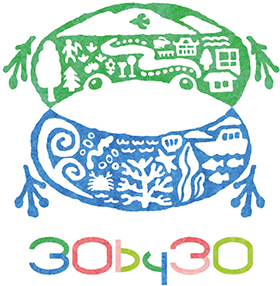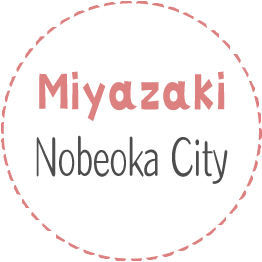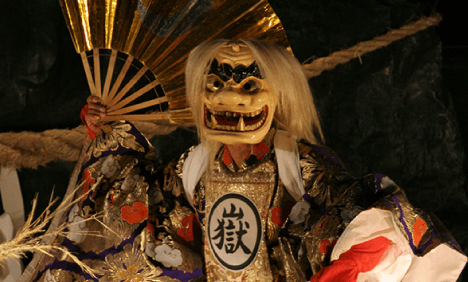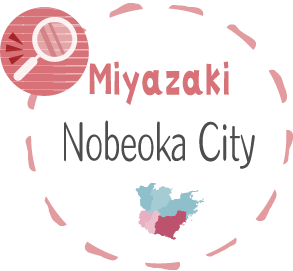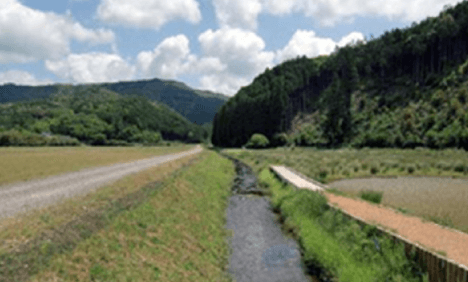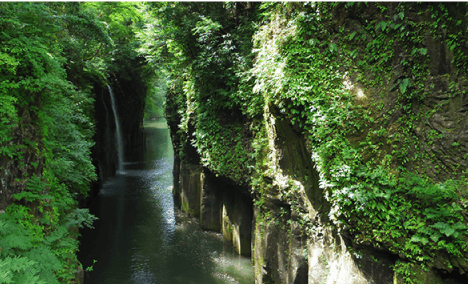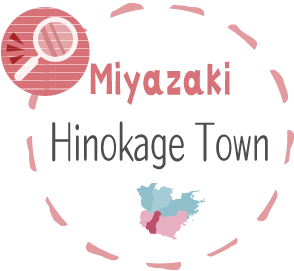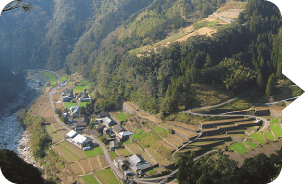Hakusui Dam Hydraulic Facility (commonly known as Hakusui Dam)
The Hakusui Dam, known as the "Lady of the Forest," was built in 1938 to secure agricultural water. With a bank length of about 86 meters and a bank height of about 14 meters, it shows amazing sculptural beauty linked to the art of water hydrodynamics.
Oka Castle Ruins
The Oka Castle Ruins, the subject of the song "Arajo no Tsuki," composed by Rentaro Taki, was joined by Hidenari Nakagawa from Harima Province (Hyogo Prefecture) in 1594 and built a castle with the shape of a modern castle on Shiga's castle ruins.
Ichigome (First) Waterfall
The Kamihara Valley, which originates from Mount Sobo, offers a refreshing waterfall tour. From the headwaters of the Ono River, there are abundant springs that are representative of Japan, and rare animals and plants that inhabit the valley live with these fertile waters.
Kawakami Valley
The Kawakami Valley is the uppermost basin of the Okudake River, about 1 kilometer from the Obira Mine Site. The clear blue water with white bubbles on the monolithic riverbed are exquisite. A mountain trail for Mt. Sobo (Miyahara/Kurokane Ridge Course) along the valley is available. Still, nature can be thoroughly enjoyed even by non-climbers.
Harajiri Falls/Oita Bungo Ono Geopark
The geology and natural environment of Bungoono City were strongly influenced by the eruption of the Aso volcano long ago. This area has the Harajiri Falls, selected as one of the 100 best waterfalls in Japan, and many spots where traces of the large pyroclastic flow are viewable up close. It was certified as a member of the Japanese Geopark in 2013.
Ondake Kagura
We believe this kagura originated in 1449 when soliciting Mitakesha. The long history of this tradition is regarded as the history of Kagura in the Ono region, and the ancestors of the Ono Iwato Kagura have spread it to Oita, Taketa, and Aso.
Yatsubara Festival
An autumn festival is held every year in late September, centering around the Shigeoka and Senzoku areas of Ume. With a history of more than 300 years, this festival offers thanks for harvesting five grains in autumn. A portable shrine is set up from Toshinoo Shrine and the Yashira Shrine to dedicate a dance, a traditional performing art of the region.
Michi no Eki Ume
There is a roadside station near the prefectural border between Oita and Miyazaki prefectures along National Highway 326. Ume Campground adjacent to the station with stone ovens and dog parks lets you bake pizza and enjoy the beautiful scenery created by the cable-stayed bridge over the adjacent Kitagawa Dam and the surrounding forest.
Fujigawachi Valley
This valley is located in Sobo Katamuki National Park and continues for about 8 km starting from Kannon Falls. An impressive vast granite monolith is full of wonder, and you can enjoy the nature of the four seasons. Recently, canyoning tours (waterfall slips) have become popular, and many people, from adults to children, enjoy playing in nature.
Mount Mukabaki
Mount Mukabaki is a magnificent mountain with a height of 831 meters, consisting of a male peak and a female peak. On the climb up is the Mukabaki Falls, with 77 meters, selected as one of the 100 best waterfalls in Japan. At the foot of the mountain is the Miyazaki Prefecture Mukabaki Youth Nature House, famous for environmental education and activities to experience nature for young people who will lead the next generation.
Kagawa Valley
The Kagawa Valley originates from Oninomeyama, where natural cedar grow abundantly. Many Yamane trout live in its clear stream. From the end of October, broad-leaved trees such as maples will turn into beautiful hues, and the autumn leaves along the promenade is a must-see. The Kagawa campsite along the valley is popular with mountain climbers who aim for the peak.
Ieda/Kawasaka Marsh
Ieda/Kawasaka Marsh is a wetland that extends to the Ieda and Kawasaka districts of Kitagawa Town, designated at the Ramsar Convention as a potential wetland of 500 important wetlands in Japan. It is a valuable wetland with more than 50 endangered species and residents put efforts into passing on this precious nature to the next generation.


Takachiho Town Tourism Association
TEL / 0982-73-1213
Takachiho Town Planning and Tourism Division
TEL / 0982-73-1213
Takachiho Shrine
The Takachiho Shrine is the Soja of 88 shrines of the Takachiho Gorge, built during the Emperor Suinin era. The main shrine and a pair of iron guardian dogs in the collection are designated national important cultural properties. The 800-year-old "Chichibu Sugi" was planted by Minamoto no Yoritomo's representative, Shigetada Hatakeyama, and the "Meotosugi," with two cedar trunks combined into one, are famous.
Takachiho Gorge
Takachiho Gorge is one of Japan's top scenic spots, designated as a national scenic natural monument as the Gokasegawa Kyokoku in 1934. It is known for the Manai no Taki (Manai Falls) and unique valley beauty formed by columnar joints, the symbol of Takachiho. You can feel the change of seasons throughout the year with fresh greenery, summer illumination, and autumn leaves.
Kunimigaoka
A legendary hill where Emperor Jimmu's grandson, Takeiwatatsu no Mikoto, stopped by during the Kyushu reign to see the country. It is known nationwide for its "sea of clouds." The view is particularly excellent from this 513-meter hill, such as the Gogaku of Aso to the west, the mountain range of Sobo to the north, Amanokaguyama, Takamagahara, the Shiojimine and Takachiho basin to the east, and the mountain stream of the Gokase River below.
Mitate Valley
The Mitate valley extends to the upper reaches of the 24-kilometer long Hinokage River. This valley is known for its unique rocks and beautiful clear streams. Along the river is the village of Ishigaki, selected as one of Japan's 100 rice paddy terraces and the British Pavilion here is a nationally registered cultural property. It is a famous place for autumn leaves and is in its prime in early November every year. The contrast between the crimson maple and the quietly flowing water is beautiful.
Ishigaki no Mura
"Ishigaki no Mura" Togawa is a quiet village with seven houses, nestled in the mountains along the Hinokage River that flows from east to west in Hinokage Town. Ishigaki, which has carved history with the village, is a work of art and a cultural heritage of the villagers of seven generations.
Seiunbashi
Seiunbashi, with a height of 137 meters from the bridge to the water, is one of the three major bridges in Hinokage Town and is the largest road bridge in the Orient that spans national roads.


